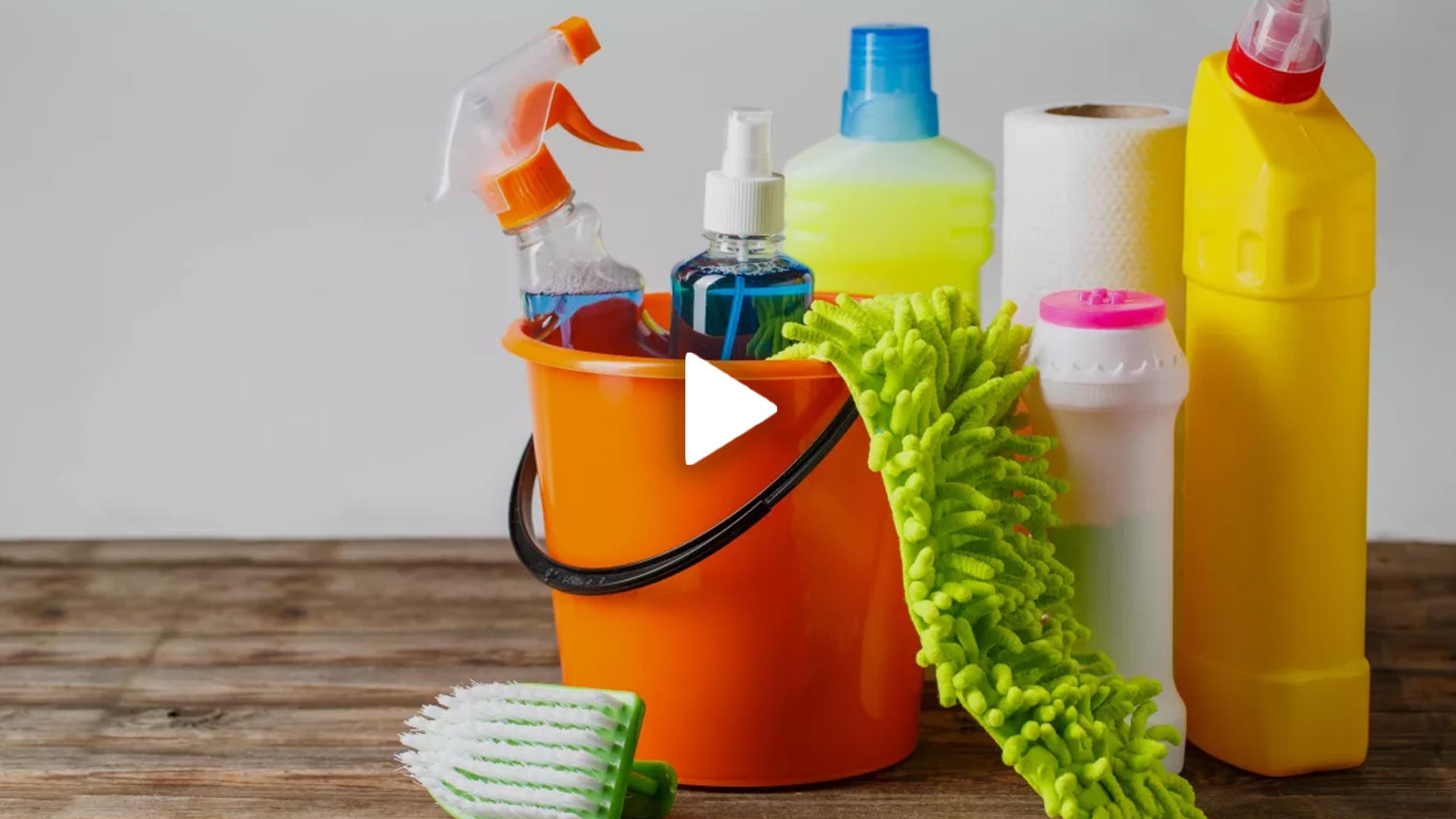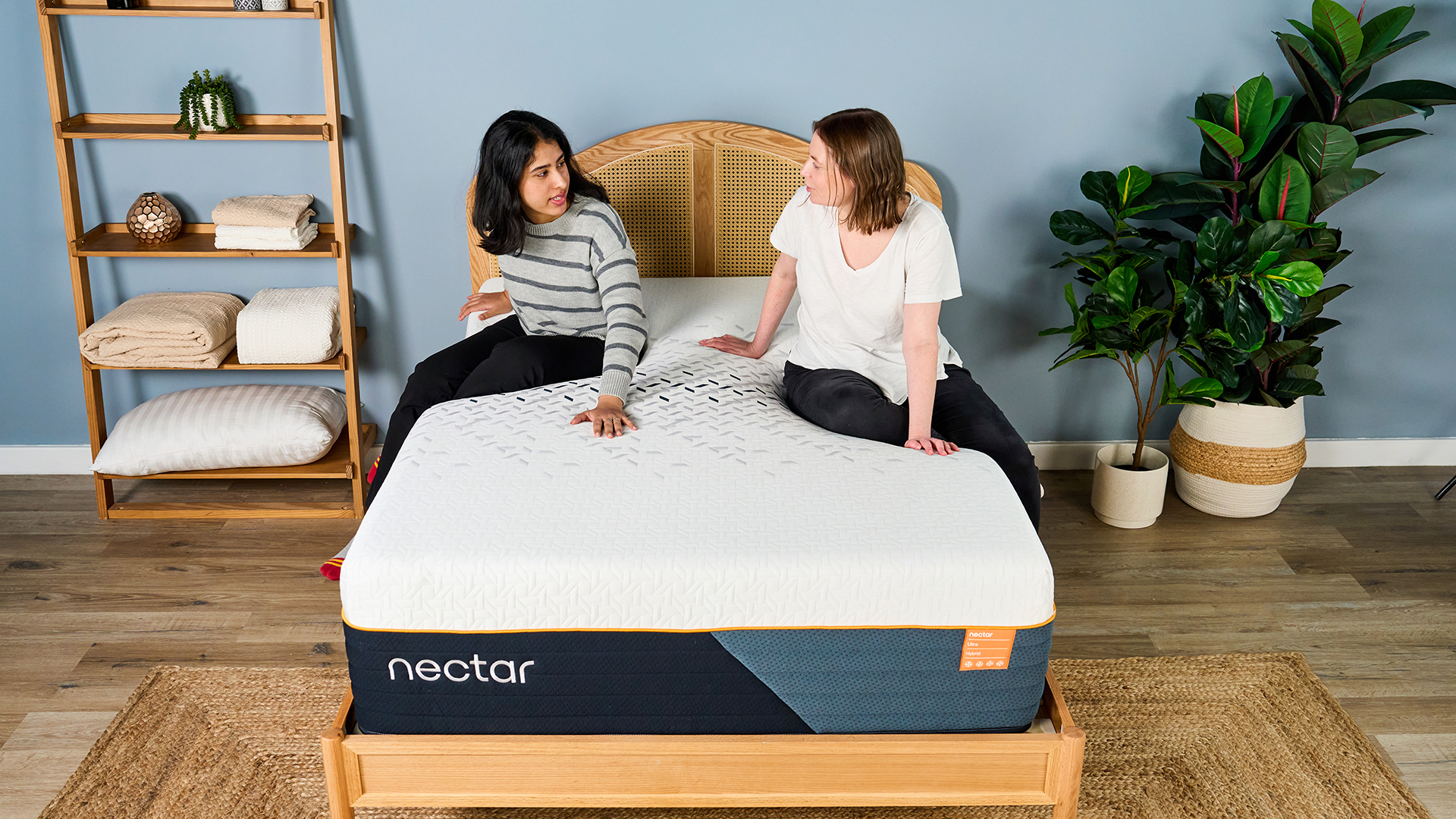These 5 TikTok cleaning hacks have gone viral — don't use them
These TikTok cleaning hacks that are best avoided

Social media has become a popular platform for viral cleaning hacks, and people sharing their “genius” tips to make household chores quick and easy.
In fact, we’ve put a few popular hacks to the test in the past. Ranging from TikTok bathroom hacks and toilet roll diffusers, to cleaning a baking tray with a dishwasher tablet, there are plenty of tips promising to make our lives easier.
However, while some simple hacks have proven to be effective, there are others that experts warn could actually damage our homes. In fact, rather than being super convenient, and cheaper, these will end up costing us more on expensive repairs in the long-run.
So if you’re looking for new ways to tackle household chores, it’s best to avoid these 5 trending cleaning hacks that will damage your home.
1. Wall mopping
Yes, you heard right — there’s a viral cleaning trend of people mopping their walls to keep them clean and spotless from top to bottom. This is done by either using a regular flathead mop, spinning mop or a paint roller.
But while this may seem like a "no-brainer" idea, experts warn against this. In fact, if it doesn’t state "washable" on the tin, certain paint types should not be scrubbed at all, or else the finish will be damaged. This is especially the case if you have a flat or matte finish.
@momthatlovestoclean ♬ Spongebob Tomfoolery - Dante9k Remix - David Snell
In addition, regularly soaking your walls in water this way could lead to all sorts of long-term problems. Not only could this damage any plasterboard, but damp walls could result in mildew or mold. So it’s best to be avoided at all costs!
Sign up to get the BEST of Tom's Guide direct to your inbox.
Get instant access to breaking news, the hottest reviews, great deals and helpful tips.
If your painted walls are looking a little grimy, simply use a soapy, soft sponge or microfibre cloth to gently wipe away any dirt. Just be careful not to soak the walls. For more top tips, check out how to clean painted walls to remove stains.
2. Cleaning the sofa with a dishwasher tablet
When was the last time you gave your sofa a deep clean? If you find cleaning a fabric sofa a tedious chore, this dishwasher tablet hack promises to easily clean and lift stains.
It requires you to dissolve a dishwasher tablet in hot water, before soaking a microfibre cloth in it. Then wrap the cloth around a pot lid, and use it to scrub away at your fabric sofa.
However, experts advise against this, saying that dishwasher tablets contain toxic chemicals that are too harsh for cleaning soft furnishings. As a result, this could damage fabric over time, causing the material to fade. What’s more, the harsh chemicals could irritate sensitive skin, and could potentially be toxic to children and pets.
@home_and_living_chanel ♬ Keeping Your Head Up (Jonas Blue Remix) [Radio Edit] - Birdy
The best way to deep-clean a sofa is to either buy a specialist, upholstery cleaner such as this Resolve 22 fl oz Multi-Fabric Cleaner and Upholstery Stain Remover ($4, Amazon), or mix a solution of two cups of distilled water, one tablespoon of dish soap and one tablespoon of vinegar.
Dishwasher tablets should be strictly for dishwasher use only!
3. Ironing out carpet dents
If you’re rearranging furniture, it’s not uncommon to find an unsightly dent (or more) in your plush carpet or rugs. And while there are plenty of clever hacks to remove dents, like this cool ice cube trick, there’s one trending hack that experts wouldn’t recommend.
This hack involves laying a cloth or flannel on top of the dent before running a hot iron over it to get rid of the dent. While this may seem like a genius tip, experts say that the heat of the iron could burn or weaken the fibres, and essentially ruin the carpet.
@carolina.mccauley ♬ Do It To It - ACRAZE
Instead, you can opt for a steamer to use at a distance, or stick to leaving an ice cube on top of the dent. The idea is that the fibres will absorb the moisture as they melt, and will rise back up to place. In any case, this would be a safer method of getting rid of unsightly dents.
4. Using bleach-soaked toilet paper to clean grout
Although bleach is our cleaning go-to when it comes to getting rid of bacteria, germs and stubborn staines, there are certain things you should never clean with bleach.
According to the experts, tiles and grout should never be cleaned with bleach — which is why they wouldn’t recommend this grout cleaning hack. This was to leave bleach-soaked toilet paper on top of the dirty grout for at least a couple of hours (or overnight), before wiping the paper down the grimy grout in order to remove stubborn stains or black mold.
@mumscleaninglockdownlife ♬ Monkeys Spinning Monkeys - Kevin MacLeod & Kevin The Monkey
Experts say that applying harsh bleach onto tiles can actually erode or discolor the grout, which can actually make them dirtier over time. In addition, bleach can damage your expensive tiles, leaving them open to cracks or scratches. This is especially the case if tiles are unglazed, and have no surface protection. And the last thing you want is to spend more money on buying replacement tiles!
Instead, create a homemade paste by mixing three parts of baking soda to one part water. Then apply onto the grout before gently scrubbing away with an old toothbrush or soft bristle brush. This will remove any stains and clean it well.
Cleaning solutions that contain bleach or ammonia are great for cleaning and disinfecting other areas such as the toilet, countertops, sinks, or even brightening white shoes. As long as you don’t make this mistake when you clean with bleach, it’s still one of the most versatile and effective cleaners.
5. Pouring bleach and dish soap down drains
Another trending cleaning hack was to pour a significant amount of bleach and dish soap down drains to clean it.
However, experts warn that mixing bleach and soap together can not only damage drains, but can be toxic. Dish soap often contains the chemical ammonia, and when mixed with bleach causes a chemical reaction. By pouring this toxic combo down the drain, this will emit fumes which can potentially cause respiratory problems or other serious health problems when gases are inhaled.
@cleanwithme052 ♬ original sound - cleanwithme052
What’s more, pouring bleach directly into the drain can damage or weaken your plumbing system. And the last thing you need is to call out a professional for serious repairs! Plus, you’ll need to avoid these 7 things you should never put down the drain too.
A safer way to unclog or clean drains is to pour a little baking soda and white vinegar. Once this non-toxic solution fizzes up, pour hot water down the drain. Not only will this help to dissolve the solution, and soften any hard grease in your drains, but get rid of lingering odors!
More from Tom's Guide

As the Homes Content Editor, Cynthia Lawrence covers all things homes, interior decorating, and garden-related. She has a wealth of editorial experience testing the latest, ‘must-have’ home appliances, writing buying guides and the handy ‘how to’ features.
Her work has been published in various titles including, T3, Top Ten Reviews, Ideal Home, Real Homes, Livingetc. and House Beautiful, amongst many.
With a rather unhealthy obsession for all things homes and interiors, she also has an interior design blog for style inspiration and savvy storage solutions (get rid of that clutter!). When she’s not testing cool products, she’ll be searching online for more decor ideas to spruce up her family home or looking for a great bargain!
